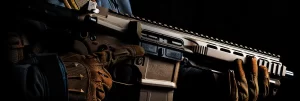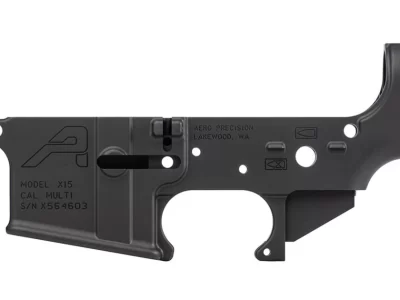It is a major part of the American ethos to “do it yourself.” Whether to save money, fill a gap in the products being offered, or simply for bragging rights, it has never been more popular to go the homemade route. It shouldn’t be surprising, then, that weapons and accessories are also many people’s “to do” list. It has long been the case that firearms competitors and enthusiasts make modifications to their weapons.
These modifications range from changing the efficiency of a weapon to simple cosmetic adjustments. Both kinds of modifications are subject to the restrictions of the National Firearms Act when it comes to making suppressors, shortening a rifle or shotgun, or adding one of the many accessories to a customizable sport rifle platform.
The Modular AR-15
Originally designed as a substitute for the military’s M-14, the civilian AR-15 has become one of the most popular and widely used weapons in the US. At the most basic level, the AR-15 consists of a lower receiver and an upper receiver.
The lower receiver is the component that has a serial number and must be purchased through an FFL. Although it does not contain the bolt carrier group (which makes it fire) or a barrel, it is legally considered a firearm.
The upper receiver is a set of parts that complete the operation of the rifle and contains the barrel. Because the barrel itself is customizable, it is possible for the AR-15 to fire different caliber ammunition.
Additions such as stocks and grips do little to change the function of the weapon but have been the subject of complex and often changeable advice from the ATF.
These modifications have spurred a regulatory nightmare for the ATF, as the explosion of manufacturers and products has exceeded the agency’s ability to keep up. Many accessories can be added to the AR-15 basic model, but when changing the overall length, the ATF considers this manufacturing a new weapon.
Size Matters
One of the most straightforward regulations regarding customizable rifles and shotguns is about barrel length. The standard size of a sport rifle is 16 inches. A short-barreled rifle is defined as having a barrel less than 16 inches long as measured from the tip of the barrel to the closed bolt or an overall length of less than 26 inches.
16 inches
This is commonly determined by inserting a dowel rod into the barrel until it is stopped by the bolt, then marked, removed, and measured. To make a short-barreled rifle, the individual must purchase a lower receiver from an FFL and then complete a Form 1 to request the customization.
Only after approval of the Form 1 and receipt of the tax stamp should the upper be purchased. Possessing both items before approval, even unassembled, is illegal. Once approved, the weapon can be assembled and engraved.
Shotguns
Shotguns can also be customized under the National Firearms Act. As they are less modular to the non-gunsmith than AR-15s, these adjustments are typically done to the barrel.
SBR
A short-barreled shotgun that is subject to the NFA has a barrel length of less than 18 inches or an overall length of less than 26 inches. The ATF allows people to make their own shortened shotguns once they have submitted a Form 1 to manufacture the weapon and receive a tax stamp.
Beyond modularity- making suppressors and AOWs
For those weapons enthusiasts who are handy with machining, making one’s own suppressor is also permitted under the National Firearms Act. This process is governed by the Form 1 process. The proposed build must be explained on the Form 1, then the approved form and tax stamp received before any parts are obtained to avoid involuntary constructive possession. Once the suppressor is built, it must be engraved to designate it as a legal NFA item.
AOW
The ATF also allows the manufacture of weapons under the category of “Any Other Weapons.” This category refers to weapons that are disguised or can be concealed. While this designation has traditionally included things like novelty guns (think pen shooters and cane guns), it has also become a catch all for those that do not fit the conventional understanding of NFA weapons.
foregrip
Probably the best known AOW item is the vertical foregrip. When this modification is added to a pistol or revolver as a second vertical foregrip, it changes the design of the weapon, necessitating two hands to fire it. This renders the item inconsistent with its original use, which designates it as an AOW under the National Firearms Act. These are also permitted for manufacture using a Form 1.
As long as components remain widely available, shooters will come up with new ways to customize their weapons. Manufacturers have jumped on the opportunity to profit off of the endless array of accessories, making it difficult for the ATF to predict what kind of legislation should be pursued.
The varying opinions about accessories such as vertical foregrips, and up until recently, bump stocks, confuse the public and expose many to inadvertently criminal behavior. The ATF provides a helpline for consumers to consult with them about purchases of components and accessories for those wishing to ensure compliance. Pursuing official advice is an imperative step for anyone wishing to “DIY” their next custom build.



 Why are Suppressors in the National Firearms Act?
Why are Suppressors in the National Firearms Act?